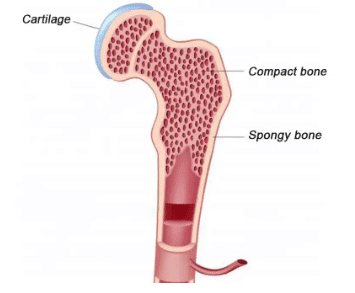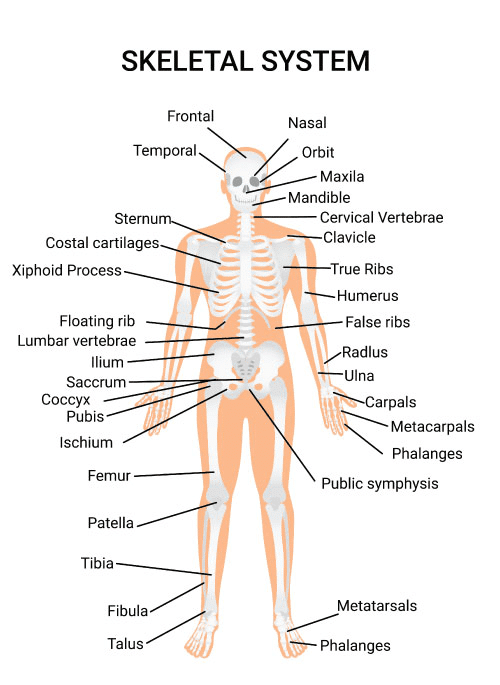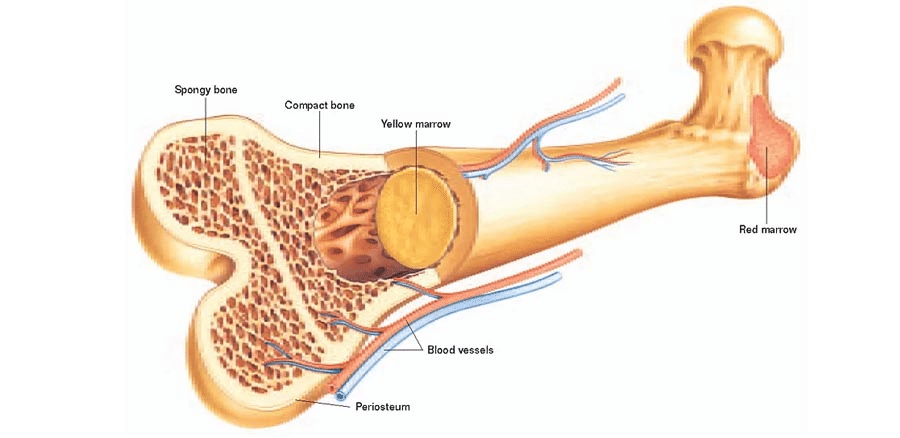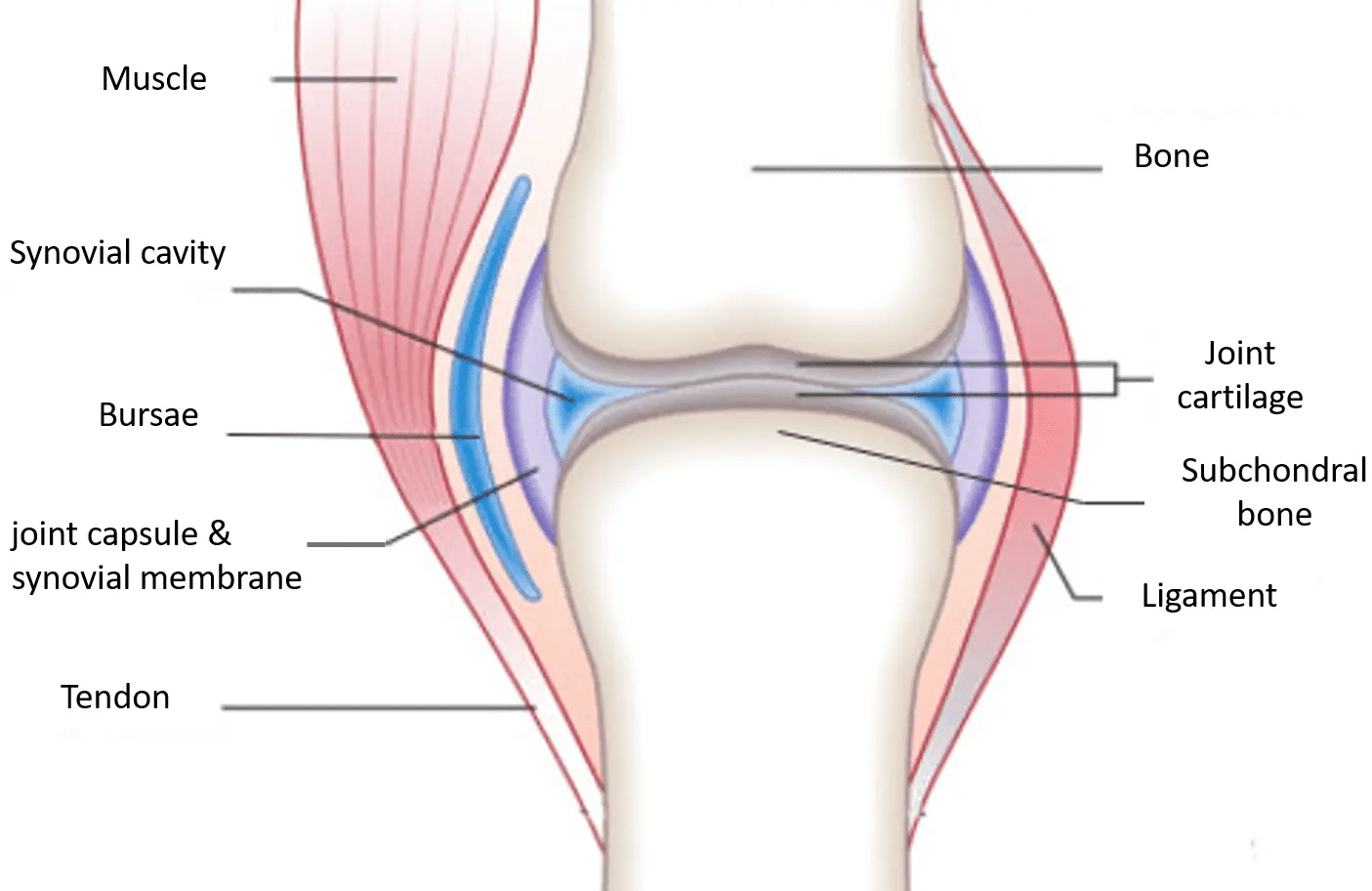Worksheet Solutions: Bones | General Knowledge for Young Learners - Class 1 PDF Download
| Table of contents |

|
| Section A: Multiple Choice Questions |

|
| Section B: Fill in the Blanks |

|
| Section C: Match the Column |

|
| Section D: True or False |

|
Section A: Multiple Choice Questions
Q1: What is the difference between compact bone and spongy bone?
(a) They have different bone marrow.
(b) They are made of different materials.
(c) They have different sizes of bone cells.
(d) They have a different arrangement of bone cells.
Ans: (d) They have a different arrangement of bone cells.
Compact bone and spongy bone have different arrangements of bone cells. Compact bone has a dense and solid structure with tightly packed osteons, while spongy bone has a porous and trabecular structure with a network of interconnected spaces.
Q2: What makes bones so strong?
(a) Silica
(b) Cartilage
(c) Blood and marrow
(d) Calcium and phosphorous
Ans: (d) Calcium and phosphorous
Bones are primarily made up of a combination of calcium and phosphorous, which form a mineralized matrix called hydroxyapatite. This mineralized matrix gives bones their strength and hardness.
Q3: Which bone protects the brain?
(a) Calcium
(b) The cranium
(c) The cerebrum
(d) The cerebellum
Ans: (b) The cranium
The cranium, also known as the skull, is the bone structure that protects the brain.
Q4: What is the skeletal system?
(a) All the bones in the body
(b) All the muscles and tendons
(c) All the body’s organs, both soft and hard tissue
(d) All the bones in the body and the tissues that connect them
Ans: (d) All the bones in the body and the tissues that connect them
The skeletal system includes all the bones in the body, as well as the tissues (such as ligaments, tendons, and cartilage) that connect and support the bones.
Q5: The hollow space in the middle of bones is filled with___
(a) Air
(b) Blood
(c) Bone cells
(d) Bone marrow
Ans: (d) Bone marrow
The hollow space in the middle of bones is filled with bone marrow. Bone marrow is a soft, spongy tissue that produces blood cells and stores fat.
Q6: What is the difference between cartilage and bone?
(a) Bone is rubbery, and cartilage is firm.
(b) Cartilage is rubbery, and bone is firm.
(c) Bone is a more primitive tissue than cartilage.
(d) Bone is inside the body, and cartilage is outside.
Ans: (b) Cartilage is rubbery, and bone is firm
Cartilage is a flexible and rubbery connective tissue, while bone is a hard and firm connective tissue. Cartilage provides support and cushioning, while bone provides structure, support, and protection.
Q7: The purpose of the rib cage is to___
(a) Protect the stomach
(b) Protect the spinal cord
(c) Protect the heart and lungs
(d) Provide an object to which the lungs can attach
Ans: (c) Protect the heart and lungs
The rib cage is a bony structure that surrounds and protects the heart and lungs.
Q8: Besides the brain, the skull also protects___
(a) The lungs
(b) The diaphragm
(c) The body’s cells
(d) The sense organs
Ans: (d) The sense organs
Besides protecting the brain, the skull also houses and protects the sense organs, such as the eyes, ears, and nose.
Q9: Which of the following statement is incorrect?
(a) Bone is where most blood cells are made.
(b) Bone serves as a storehouse for various minerals.
(c) Bone is a dry and non-living supporting structure.
(d) Bone protects and supports the body and its organs.
Ans: (c) Bone is a dry and non-living supporting structure
This statement is incorrect. Bone is a living tissue that is well-vascularized and contains living cells, such as osteocytes. It is not a dry and non-living supporting structure.
Q10: How many bones are there in the average person’s body?
(a) 33
(b) 206
(c) 639
(d) It varies by individual
Ans: (b) 206
The average adult human body has 206 bones. However, the number of bones can vary slightly from person to person due to the presence of accessory bones or individual anatomical differences.
Section B: Fill in the Blanks
Q1: Bones provide __________ to the body.
Ans: Support
Bones provide support to the body, helping it maintain its shape and structure.
Q2: The framework of the body is called the __________ system.
Ans: Skeleton
The framework of the body is called the skeleton system. It includes all the bones in the body.
Q3: The skull protects the __________.
Ans: Brain
Explanation: The skull protects the brain, which is a vital organ responsible for various functions.
Q4: The backbone is also known as the __________.
Ans: Spine
The backbone is also known as the spine. It consists of a series of bones called vertebrae that protect the spinal cord.
Q5: Joints help us to move our __________.
Ans: Body Parts
Joints help us move our body parts by allowing the bones to articulate or move in different directions.
Q6: Bones are made up of hard and _________ tissue.
Ans: Calcified
Bones are made up of hard and calcified tissue, providing strength and rigidity.
Q7: The place where two bones meet is called a __________.
Ans: Joint
The place where two bones meet is called a joint. It allows movement and flexibility.
Q8: The three types of muscles are __________, __________, and __________.
Ans: Skeletal, Cardiac, Smooth
The three types of muscles are skeletal muscles (attached to bones), cardiac muscles (found in the heart), and smooth muscles (found in the organs and blood vessels).
Q9: __________ connect bones to other bones.
Ans: Ligaments
Ligaments connect bones to other bones, providing stability and limiting excessive movement.
Q10: __________ is a tough, flexible tissue that covers the ends of bones.
Ans: Cartilage
Cartilage is a tough, flexible tissue that covers the ends of bones, reducing friction and acting as a shock absorber.
Section C: Match the Column

Ans:
Section D: True or False
Q1: Bones are living tissues.
Ans: True
Q2: The ribcage protects the heart and lungs.
Ans: True
Q3: There are 206 bones in the human body.
Ans: False
There are 206 bones in the adult human body. However, the number can vary slightly among individuals.
Q4: The patella is also known as the kneecap.
Ans: True
Q5: Cartilage is a soft and flexible connective tissue.
Ans: True
|
52 videos|107 docs|40 tests
|
FAQs on Worksheet Solutions: Bones - General Knowledge for Young Learners - Class 1
| 1. What are the main sections of the Bones Class 1 exam? |  |
| 2. How can I prepare for the Multiple Choice Questions section? |  |
| 3. What types of questions are included in the Fill in the Blanks section? |  |
| 4. How do I match the columns in Section C effectively? |  |
| 5. Are there any true or false statements I should focus on for Section D? |  |



















